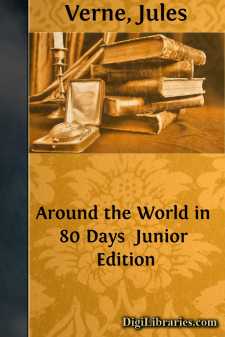Categories
- Antiques & Collectibles 13
- Architecture 36
- Art 48
- Bibles 22
- Biography & Autobiography 813
- Body, Mind & Spirit 142
- Business & Economics 28
- Children's Books 15
- Children's Fiction 12
- Computers 4
- Cooking 94
- Crafts & Hobbies 4
- Drama 346
- Education 46
- Family & Relationships 57
- Fiction 11828
- Games 19
- Gardening 17
- Health & Fitness 34
- History 1377
- House & Home 1
- Humor 147
- Juvenile Fiction 1873
- Juvenile Nonfiction 202
- Language Arts & Disciplines 88
- Law 16
- Literary Collections 686
- Literary Criticism 179
- Mathematics 13
- Medical 41
- Music 40
- Nature 179
- Non-Classifiable 1768
- Performing Arts 7
- Periodicals 1453
- Philosophy 64
- Photography 2
- Poetry 896
- Political Science 203
- Psychology 42
- Reference 154
- Religion 513
- Science 126
- Self-Help 84
- Social Science 81
- Sports & Recreation 34
- Study Aids 3
- Technology & Engineering 59
- Transportation 23
- Travel 463
- True Crime 29
The Moon-Voyage
by: Jules Verne
Description:
Excerpt
CHAPTER I.
THE GUN CLUB.
During the Federal war in the United States a new and very influential club was established in the city of Baltimore, Maryland. It is well known with what energy the military instinct was developed amongst that nation of shipowners, shopkeepers, and mechanics. Mere tradesmen jumped their counters to become extempore captains, colonels, and generals without having passed the Military School at West Point; they soon rivalled their colleagues of the old continent, and, like them, gained victories by dint of lavishing bullets, millions, and men.
But where Americans singularly surpassed Europeans was in the science of ballistics, or of throwing massive weapons by the use of an engine; not that their arms attained a higher degree of perfection, but they were of unusual dimensions, and consequently of hitherto unknown ranges. The English, French, and Prussians have nothing to learn about flank, running, enfilading, or point-blank firing; but their cannon, howitzers, and mortars are mere pocket-pistols compared with the formidable engines of American artillery.
This fact ought to astonish no one. The Yankees, the first mechanicians in the world, are born engineers, just as Italians are musicians and Germans metaphysicians. Thence nothing more natural than to see them bring their audacious ingenuity to bear on the science of ballistics. Hence those gigantic cannon, much less useful than sewing-machines, but quite as astonishing, and much more admired. The marvels of this style by Parrott, Dahlgren, and Rodman are well known. There was nothing left the Armstrongs, Pallisers, and Treuille de Beaulieux but to bow before their transatlantic rivals.
Therefore during the terrible struggle between Northerners and Southerners, artillerymen were in great request; the Union newspapers published their inventions with enthusiasm, and there was no little tradesman nor naïf "booby" who did not bother his head day and night with calculations about impossible trajectory engines.
Now when an American has an idea he seeks another American to share it. If they are three, they elect a president and two secretaries. Given four, they elect a clerk, and a company is established. Five convoke a general meeting, and the club is formed. It thus happened at Baltimore. The first man who invented a new cannon took into partnership the first man who cast it and the first man that bored it. Such was the nucleus of the Gun Club. One month after its formation it numbered eighteen hundred and thirty-three effective members, and thirty thousand five hundred and seventy-five corresponding members.
One condition was imposed as a sine quâ non upon every one who wished to become a member—that of having invented, or at least perfected, a cannon; or, in default of a cannon, a firearm of some sort. But, to tell the truth, mere inventors of fifteen-barrelled rifles, revolvers, or sword-pistols did not enjoy much consideration. Artillerymen were always preferred to them in every circumstance....












